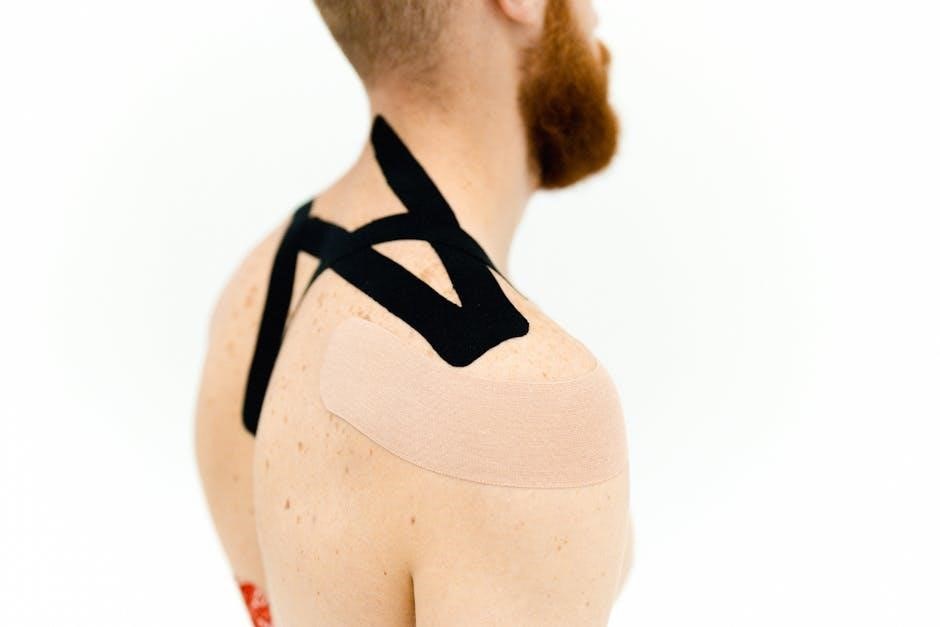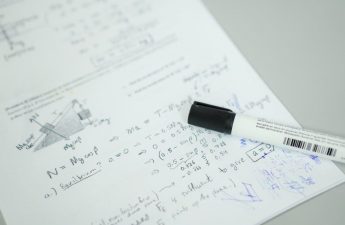Shoulder Dislocation Rehabilitation Protocol PDF: A Comprehensive Guide
This comprehensive guide provides a structured approach to shoulder dislocation rehabilitation. It includes phases focusing on range of motion, strengthening, and neuromuscular control. The protocol helps patients return to functional activities and sports. It emphasizes proprioception and core stability exercises for shoulder stability.
Shoulder dislocation, a common injury, particularly among active individuals, involves the displacement of the humerus from the glenoid fossa. This often results from trauma or excessive force, leading to pain, instability, and functional limitations. Effective rehabilitation is crucial to restore shoulder stability, range of motion, and strength, and to prevent recurrent dislocations.
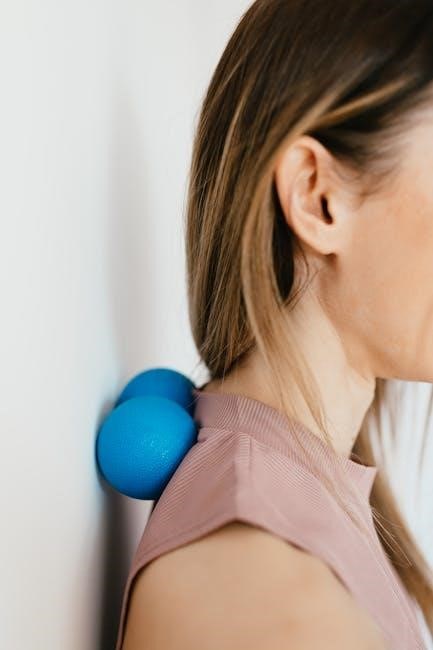
The primary goal of a structured rehabilitation protocol is to guide patients through a progressive recovery process. Early intervention focuses on reducing pain and inflammation, while later stages emphasize strengthening and proprioceptive exercises. These exercises improve joint awareness and control.
Rehabilitation is often divided into phases, each with specific goals and exercises tailored to the patient’s progress. A comprehensive protocol considers individual needs, activity levels, and the severity of the dislocation. It integrates various therapeutic techniques and exercises to optimize recovery and facilitate a safe return to activities and sports. The protocol should also address potential complications and provide strategies for their management.
The use of a PDF document ensures easy accessibility to detailed instructions and exercises. It provides a valuable resource for both patients and healthcare professionals.
Initial Management: Reducing Inflammation and Pain
The immediate aftermath of a shoulder dislocation requires prompt attention to minimize inflammation and alleviate pain. The initial focus involves stabilizing the shoulder joint and protecting it from further injury. A sling is typically used for comfort and immobilization, allowing the surrounding tissues to rest and begin the healing process.
Controlling inflammation is paramount. Cryotherapy, such as applying ice packs for 15-20 minutes several times a day, helps to reduce swelling and numb the area. Pain management strategies may include over-the-counter analgesics or, in more severe cases, prescription pain medication, as directed by a physician.
Gentle range-of-motion exercises, initiated early but cautiously, can prevent stiffness. These exercises should be pain-free and performed within the limits of comfort. Scapular setting exercises, which involve controlled movements of the shoulder blade, can also be introduced to promote proper alignment and muscle activation. Patient education on proper posture and movement patterns is essential to avoid aggravating the injury. The aim is to create an environment conducive to healing and prepare the shoulder for subsequent rehabilitation phases.
Rest is a key element in this initial phase. Avoiding activities that stress the shoulder joint is crucial for recovery.
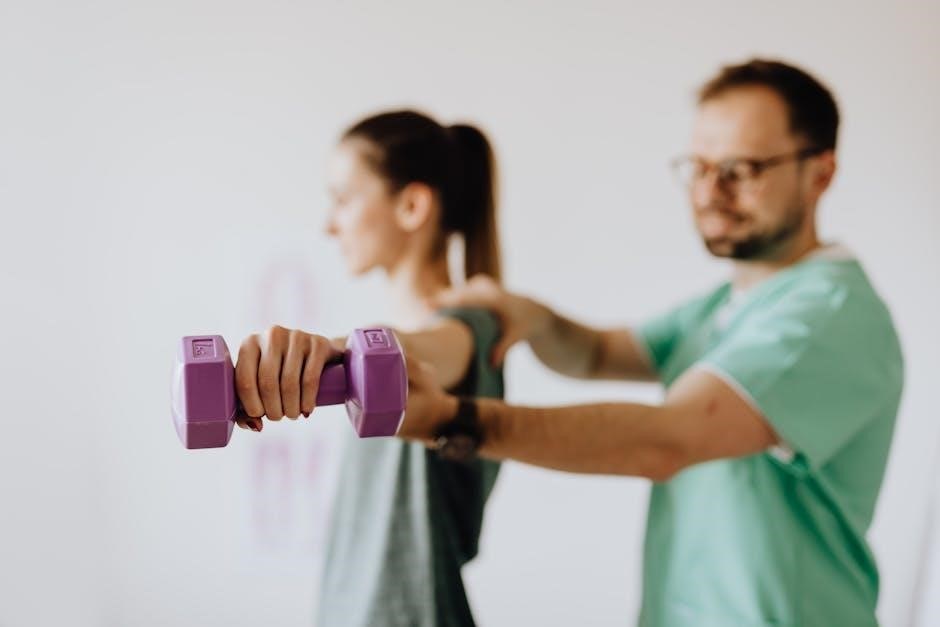
Phase 1: Early Stage Rehabilitation (Weeks 1-2)
Phase 1 of rehabilitation, typically spanning weeks 1-2 post-dislocation, focuses on protecting the healing tissues and gradually restoring pain-free range of motion. The primary goals are to reduce pain and inflammation, prevent stiffness, and initiate gentle muscle activation; The arm is typically kept in a sling, except during exercise periods.
Exercises during this phase are gentle and controlled. Pendulum exercises, where the patient leans forward and allows the arm to swing gently in small circles, are commonly prescribed to promote circulation and mobility. Active-assisted range-of-motion exercises, using the unaffected arm to guide the injured arm, can also be introduced, ensuring movements remain within a comfortable range.
Isometric exercises, where muscles are contracted without movement, are used to activate the rotator cuff muscles and surrounding shoulder stabilizers. Scapular setting exercises continue to be emphasized to maintain proper shoulder blade positioning. Core stability exercises are also initiated to provide a stable base for shoulder movements. Patient education remains crucial, with emphasis on proper posture, pain management techniques, and activity modification to prevent re-injury. The progression to the next phase depends on pain levels and the ability to perform exercises without exacerbating symptoms.
It’s important to avoid any activities that could potentially re-dislocate the shoulder during this vulnerable period.
Phase 2: Intermediate Stage Rehabilitation (Weeks 3-6)

Phase 2, spanning weeks 3-6, aims to gradually restore shoulder range of motion and initiate strengthening exercises. Pain and inflammation should continue to decrease during this phase. The use of a sling is typically discontinued, and the focus shifts to active range-of-motion exercises. These exercises include forward flexion, abduction, external rotation, and internal rotation, performed within a pain-free range.
Strengthening exercises are introduced, starting with light resistance using elastic bands or light weights. Exercises target the rotator cuff muscles (supraspinatus, infraspinatus, teres minor, and subscapularis) and the scapular stabilizers (trapezius, rhomboids, and serratus anterior). Examples include rows, external rotation, and internal rotation exercises. Proprioceptive exercises, which enhance joint awareness and control, are incorporated using wobble boards or balance pads.
Scapular setting exercises and core stability exercises are progressed to increase the challenge. Emphasis is placed on maintaining proper form and avoiding compensatory movements. Patients are educated on proper body mechanics and posture to prevent re-injury. The progression to the next phase depends on achieving adequate range of motion, strength, and stability, without exacerbating pain or inflammation. Close monitoring and individualized adjustments to the rehabilitation program are crucial during this phase to optimize outcomes.
Phase 3: Advanced Stage Rehabilitation (Weeks 7+)
Phase 3, typically starting around week 7, focuses on advanced strengthening, neuromuscular control, and return to functional activities. The primary goal is to restore full, pain-free range of motion and strength, preparing the shoulder for higher-demand activities. Strengthening exercises are progressed using heavier weights and more challenging resistance. Exercises target all shoulder muscles, including the rotator cuff, deltoid, and scapular stabilizers.
Plyometric exercises, such as medicine ball throws and plyometric push-ups, are introduced to improve power and explosiveness. Sport-specific exercises are incorporated to mimic the movements required for the patient’s desired activities. Examples include throwing drills for baseball players or overhead reaching for volleyball players. Proprioceptive exercises are advanced to challenge balance and coordination. This may involve using unstable surfaces or performing exercises with eyes closed.
Throughout this phase, close attention is paid to proper technique and biomechanics to prevent re-injury. Patients are educated on injury prevention strategies and self-management techniques. The criteria for returning to sport or activity are based on objective measures of strength, range of motion, and functional performance. A gradual return to activity is recommended, starting with low-intensity and gradually increasing the intensity and duration. Regular follow-up appointments are scheduled to monitor progress and address any concerns. Individualized modifications to the rehabilitation program are made based on the patient’s specific needs and goals.
Proprioceptive Exercises for Shoulder Stability
Proprioceptive exercises are crucial for regaining shoulder stability after a dislocation. These exercises focus on improving the body’s awareness of joint position and movement in space, enhancing neuromuscular control. After a shoulder dislocation, proprioception is often impaired, increasing the risk of re-injury. The aim of these exercises is to retrain the nervous system to respond effectively to changes in joint position, thus improving dynamic stability.
Early-stage proprioceptive exercises involve simple weight-shifting activities in a comfortable range of motion. These may include rhythmic stabilization exercises, where a therapist applies gentle perturbations to the shoulder while the patient maintains a stable position. As rehabilitation progresses, exercises become more challenging, incorporating unstable surfaces such as wobble boards or balance discs. Functional exercises, such as reaching and grasping with varying weights, are also used to enhance proprioceptive feedback during real-life movements.
Advanced proprioceptive exercises may involve sport-specific drills, such as throwing or overhead activities, performed with controlled movements and focus on maintaining joint stability. The goal is to improve the speed and accuracy of the neuromuscular response, allowing the shoulder to react effectively to unexpected forces. Throughout the rehabilitation process, feedback from a physical therapist is essential to ensure proper technique and progression, maximizing the benefits of proprioceptive training for long-term shoulder stability.
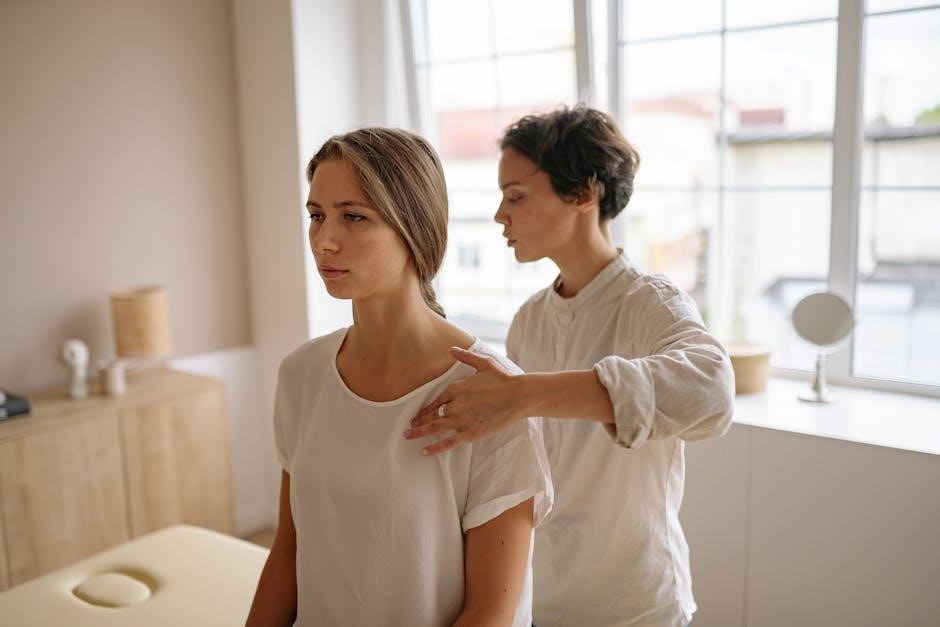
Scapular Setting and Core Stability Exercises
Scapular setting and core stability exercises are fundamental components of shoulder rehabilitation following a dislocation. The scapula, or shoulder blade, provides a stable base for shoulder movement, and proper scapular positioning is essential for optimal shoulder function; Scapular setting exercises focus on retraining the muscles that control scapular movement, such as the trapezius, rhomboids, and serratus anterior. These exercises aim to improve scapular upward rotation, posterior tilting, and protraction/retraction, promoting a balanced and stable shoulder complex.
Core stability exercises are equally important, as the core muscles provide a foundation for all upper extremity movements. A strong and stable core allows for efficient transfer of forces during activities involving the shoulder, reducing stress on the joint. Core exercises typically involve engaging the deep abdominal muscles, such as the transverse abdominis, as well as the obliques and spinal erectors. Examples include planks, bridges, and abdominal bracing exercises. These exercises improve postural control and provide a stable base from which the shoulder can function optimally.
Combining scapular setting and core stability exercises enhances overall shoulder stability and reduces the risk of re-injury; These exercises should be performed with proper technique and under the guidance of a physical therapist. As rehabilitation progresses, the exercises can be advanced to incorporate dynamic movements and functional activities, further improving shoulder function and stability. The integration of these exercises ensures a comprehensive approach to shoulder rehabilitation, promoting long-term recovery and preventing future dislocations.
Range of Motion Exercises
Range of motion (ROM) exercises are a cornerstone of shoulder dislocation rehabilitation, aiming to restore the normal movement patterns of the shoulder joint. Following a dislocation, the shoulder may become stiff and restricted due to pain, inflammation, and muscle guarding. ROM exercises help to gently mobilize the joint, improve flexibility, and reduce stiffness. These exercises should be initiated early in the rehabilitation process, starting with passive ROM exercises and gradually progressing to active-assisted and active ROM exercises.
Passive ROM exercises involve the therapist or caregiver moving the patient’s arm through the available range of motion while the patient remains relaxed. This helps to prevent stiffness and maintain joint mobility without placing stress on the healing tissues. Active-assisted ROM exercises involve the patient using their own muscles to assist in the movement, with the therapist providing support or guidance as needed. This helps to gradually increase muscle activation and improve motor control. Active ROM exercises involve the patient moving their arm independently through the full range of motion.
Common ROM exercises for the shoulder include forward flexion, abduction, external rotation, and internal rotation. These exercises should be performed slowly and deliberately, focusing on achieving a smooth and controlled movement pattern. It is important to avoid pushing through pain or forcing the joint beyond its comfortable range. As ROM improves, the exercises can be progressed to incorporate functional activities, such as reaching overhead or across the body. Regular performance of ROM exercises is crucial for restoring shoulder function and preventing long-term limitations.
Strengthening Exercises
Strengthening exercises are a vital component of shoulder dislocation rehabilitation, designed to rebuild the strength and endurance of the muscles surrounding the shoulder joint. Following a dislocation, these muscles may become weakened due to disuse, pain, and nerve injury. Strengthening exercises help to restore muscle function, improve shoulder stability, and prevent re-injury. These exercises are typically introduced in the intermediate to advanced stages of rehabilitation, after adequate range of motion and pain control have been achieved.
Strengthening exercises should be performed using a progressive approach, starting with low-resistance exercises and gradually increasing the resistance as the muscles become stronger. Common strengthening exercises for the shoulder include isometric exercises, resistance band exercises, and weightlifting exercises. Isometric exercises involve contracting the muscles without any movement of the joint. Resistance band exercises use elastic bands to provide resistance during movement. Weightlifting exercises involve using dumbbells or other weights to challenge the muscles.
Specific strengthening exercises may target different muscle groups around the shoulder, such as the rotator cuff muscles, deltoid muscle, and scapular stabilizing muscles. Rotator cuff strengthening exercises are particularly important for improving shoulder stability and preventing impingement. Scapular stabilizing exercises help to improve posture and control of the shoulder blade, which is essential for optimal shoulder function. It is important to perform strengthening exercises with proper form and technique to avoid injury. As strength improves, the exercises can be progressed to incorporate functional activities, such as throwing or lifting.
Return to Sport/Activity Considerations
Returning to sport or activity after a shoulder dislocation requires careful consideration and a gradual progression to minimize the risk of re-injury. The decision to return should be made in consultation with a physical therapist or physician, taking into account the individual’s progress, the demands of the sport or activity, and any potential risk factors.
Before returning to sport or activity, it is essential to have achieved full, pain-free range of motion, adequate strength and endurance, and good neuromuscular control. The shoulder should be stable and able to withstand the stresses of the sport or activity. A functional assessment, such as a throwing test or agility test, may be performed to evaluate the shoulder’s ability to perform sport-specific movements.
The return to sport or activity should be gradual, starting with low-impact activities and gradually increasing the intensity and duration. A progressive exercise program should be implemented to prepare the shoulder for the demands of the sport or activity. This program may include sport-specific drills, plyometric exercises, and agility exercises. It is important to listen to the body and avoid pushing through pain. If any pain or instability is experienced, the activity should be stopped and evaluated. Bracing or taping may be used to provide additional support and stability during the return to sport or activity. Education on proper warm-up techniques and injury prevention strategies is crucial for minimizing the risk of re-injury.
Potential Complications and Management
While a structured rehabilitation protocol aims for optimal recovery after a shoulder dislocation, several potential complications can arise, impacting the healing process and long-term shoulder function. Recognizing and addressing these complications promptly is crucial for successful management. One common complication is recurrent instability, where the shoulder dislocates again, even with minor trauma. Management involves further strengthening exercises, proprioceptive training, and potentially surgical intervention if conservative measures fail to provide adequate stability.
Another potential complication is rotator cuff tears, especially in older individuals. These tears can occur during the initial dislocation or develop over time due to instability. Management depends on the severity of the tear and may involve physical therapy, injections, or surgical repair. Nerve injury, such as axillary nerve damage, can also occur during a shoulder dislocation, leading to weakness or numbness in the shoulder and arm. Management includes observation, physical therapy, and potentially nerve conduction studies to assess the extent of the injury.
Stiffness and limited range of motion can also develop, particularly if immobilization is prolonged. Management involves aggressive range of motion exercises and stretching. In some cases, adhesive capsulitis (frozen shoulder) may develop, requiring more intensive physical therapy or injections. Finally, chronic pain can persist even after successful rehabilitation. Management may involve pain medication, injections, and alternative therapies such as acupuncture. Early identification and appropriate management of these potential complications are essential for maximizing functional outcomes and minimizing long-term disability.
